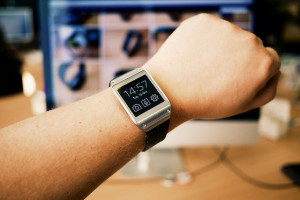I’ve sat on this post for several days now, because I empathize with the sense of fear that George Siemens described two weeks ago:
When I first started blogging, I had a sense of fear with every post (“did that sound stupid?”), loss of sleep soul-searching when a critical comment was posted, and envy when peers posted something brilliant (“wow, why didn’t I think of that?”).
I think all bloggers have probably felt this way, illustrating one of the reasons an editor-colleague can be so valuable. The act of blogging – or nearly any type of shared or public learning experience, for that matter – can bring with it a daunting sense of weakness. Sometimes these feelings of weakness may yield humility within the learner, which can be a good thing, while other times raw anger and defensiveness result. Alas, the price of “learner becoming.”
Nevertheless, at the heart of George Siemens‘ recent argument – echoed by Will Richardson, Stephen Downes, and Audrey Watters – lies an idea with which I simply can’t agree.
Learning is vulnerability. When we learn, we make ourselves vulnerable. When we engage in learning, we communicate that we want to grow, to become better, to improve ourselves.
Have we consigned ourselves to a world where learning must be networked, must require community, and must embrace the vulnerability of students? I hope not. Even simple definitions describe learning as the “activity or process of gaining knowledge or skill by studying, practicing, being taught, or experiencing something.” In today’s technologically capable society, there are many times when learning (i.e., studying, practicing, being taught, and experiencing) takes place without an audience and with minimal communication strain on the part of the learner.

When technology is used to access knowledge, with whom must today’s learner unavoidably communicate? I agree that the deepest learning takes place through empathetic human interaction, but unaccompanied and private learning nonetheless happen all the time.
How vulnerable do we really make ourselves while quietly checking Wikipedia on our phones? Is human to human communication required to span Google Scholar? How much frailty is demonstrated by the student eagerly engaged in a self-paced MOOC? With whom do we communicate our desire to grow when we spend alone time reading a book? Finally, when Will Richardson’s daughter used YouTube to learn to play the piano on her own, to whom did she disclose her deficiency?
No one.
Learning is no more vulnerability than eating might be. Consider instead that ignorance is vulnerability; as is the human body’s need for nourishment. Learning and eating, therefore, become the processes followed to overcome these all-to-common weaknesses.
When Facebook introduced inline privacy control to its line of basic privacy settings in October 2012, they provided users with the ability to easily control audience. What keeps us from doing the same for our students, and how might this type of learner autonomy improve their impressions of school?